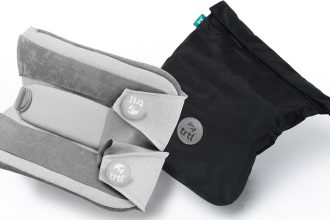Researchers at the Korea Advanced Institute of Science and Technology (KAIST) have achieved a fundamental breakthrough in the field of soft robotics; A liquid switch powered by ionic polymer artificial muscles. This invention is notable for performing well at very low power while producing a force that is significantly 34 times greater than its weight.
The invention of this fluid switch is considered an important breakthrough in the field of robotics and medical equipment technology. Previously, traditional fluid switches were not widely used in delicate and sensitive spaces due to their size and rigid structure. However, the fluid switch of the KAIST research team has overcome the previous limitations and managed to show good performance in the mentioned fields. This switch promises a new era of efficiency and adaptability in the field of soft robotics and related technologies by controlling fluid flow in different directions and performing movements without the need for high power.
Ultra low voltage soft fluid switch
A KAIST research team led by Professor IlKwon Oh has developed a new soft fluid switch that operates at very low voltage. This pioneering invention is distinguished by unique features such as flexibility and small size from the conventional examples based on previous engines. The fluid switch is powered by artificial muscles and simulates the flexibility and natural movements of human muscles.
Soft artificial muscles respond to external stimuli such as electricity, air pressure, and temperature changes, thus providing the switch with a precise control mechanism for fluid flow. The development of this tool is an important step in the field of soft robotics and fluid mechanics, which provides a more compatible and efficient solution for various applications.

Transformation technology with ionic polymer artificial muscle
At the core of this new switch is the ionic polymer artificial muscle. This muscle is a unique combination of metal electrodes and ionic polymers developed by the KAIST team. Also, the power generation capacity of this device increases dramatically with the presence of a polysulfone covalent organic framework (pS-COF) on the muscle electrode. Despite its narrow shape, this muscle, with a thickness of 180 micrometers, can produce more than 34 times its own weight.
Professor IlKwon Oh emphasizes the potential of this technology in various industrial applications. “This technology has the potential to be rapidly used in a variety of industrial settings, from smart fibers to biomedical devices,” he says. This system, he notes, can be easily integrated into small systems, opening up many possibilities in the fields of soft robotics, soft electronics, and microfluidics based on open fluid control. This versatility validates the wide application of soft electron actuators in soft robotics transformation and other technology-based industries.


RCO NEWS












